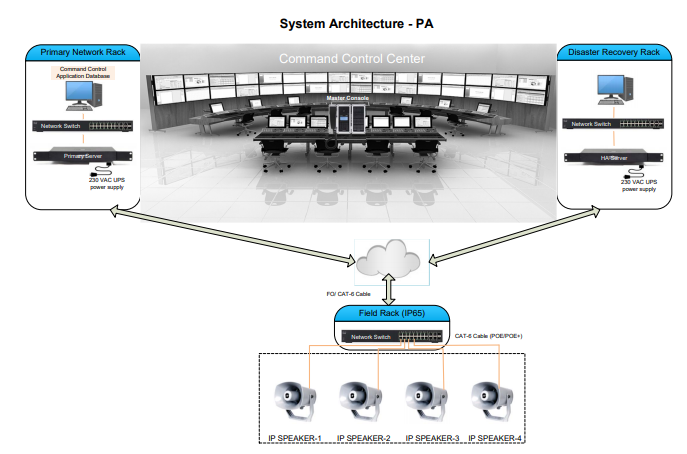Intelligent Traffic Management System

-
INTELLIGENT TRAFFIC MANAGEMENT SYSTEM
Intelligent Traffic Management System is specially designed and architecture to replace tedious manual process to track, regulate and analyses vehicle movements on roads to enforce traffic rules for the safety of people and citizens and their properties. It acts as a true decision support system for traffic planners and traffic law enforcement agencies such as State traffic police and Traffic Control and Management agencies.
ATCS – Adaptive Traffic Control System
The adaptive traffic control system will provide simulation based real time traffic flow modelling capability with the capacity to calculate traffic flows, Vehicle movements, and queues and turning movement along entire primary road transport network in the defined study area covering the ATCS junctions.
The proposed solution has the radar-based sensors at junctions for detecting vehicles and assessing queue lengths, which communicates the information to locally installed controllers at the junctions. All local controllers shall in-turn be linked to software installed in a server, at the control room, which will bring coordination among all the junctions on a real time basis.
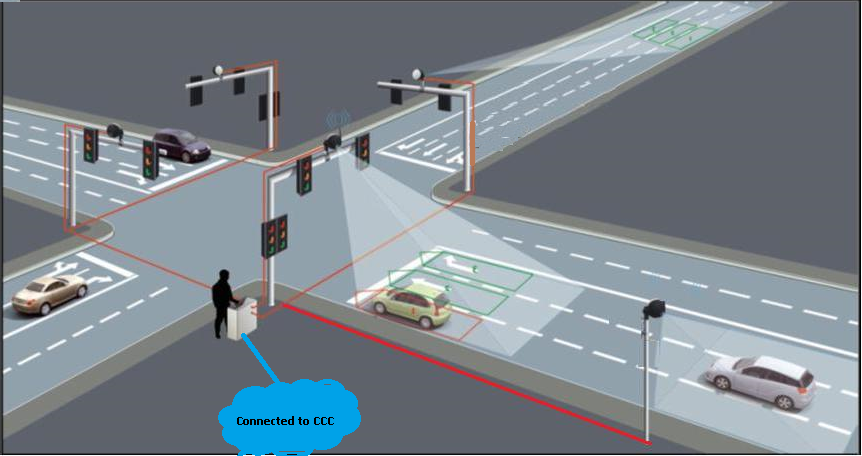
The proposed solution uses sensor networks along with embedded technology. The timings of red and green lights at each crossing of road will be intelligently decided considering the traffic on all adjacent roads. Thus, optimization of traffic light switching increases road capacity and traffic flow and can prevent traffic congestions. The performance of intelligent traffic light controller is more efficient than the conventional controller in respect of less waiting time, more distance traveled by average vehicles and efficient operation during emergency mode.
Following are the major components of the proposed ATCS:
- Vehicle Detectors
- Communication Network
- Central Control System
Additionally, the ATCS shall be supported by the following sub-components:
- Central Server
- Communication Network
- Radar-based Sensor
- Central Application Server
- Cantilever Poles & Standard Poles
- Signal Aspects
- Countdown Timers
- Solar Power Backup
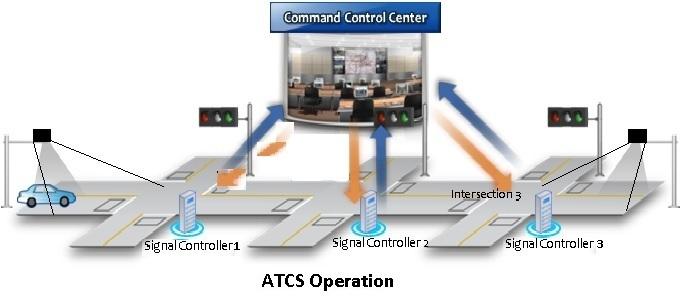
Traffic Enforcement System
Traffic Enforcement Systems are automated or semi-automated systems through which traffic violations are captured and challans can be generated. They help in increasing compliance to traffic rules and reduce manual intervention in traffic enforcement activities.
Traffic Violation detection system will have following solutions:
- ANPR – Automated Number Plate Recognition
- RLVD – Red-Light Violation detection
- SVD – Speed Violation detection
- E- Challan
What it does is…
The Intelligent Monitoring System(ITMS) detects Licence plates (hence the Vehicles) in the camera FOV, and stores them in Database along with other information such as
- Trajectory of the Vehicle within the FOV.
- The color of the Vehicle (around number plate region).
- Image of the Vehicle and also that of the Licence plate.
- The signal status : Whether it is Green or Red.
With these information in hand, It generates various “events”, e.g. ANPR, RLVD, Wrong way movement etc.
Where it can be used
- Extraction of Licence numbers and store them for future search and reports.
- Red Light violation detection (along with another associated camera)
- Wrong way movement Detection.
- Hot listed vehicles Detection(like suspected, stolen, wanted).
- eChallan generation against violation of traffic rules (RLVD, Wrong way, etc)
ANPR – Automated Number Plate Recognition
ANPR cameras shall provide the feed to the Command & Control centre, where the ANPR server shall be located. The ANPR server shall process the image using OCR software for getting the registration number of the vehicle with highest possible accuracy. The system shall be able to detect, normalize and enhance the image of the number plate for detection of alpha numerical characters. System shall be able to identify stolen/ suspected vehicles by cross checking the numbers with vehicle database. ANPR software shall be integrated with video management system.
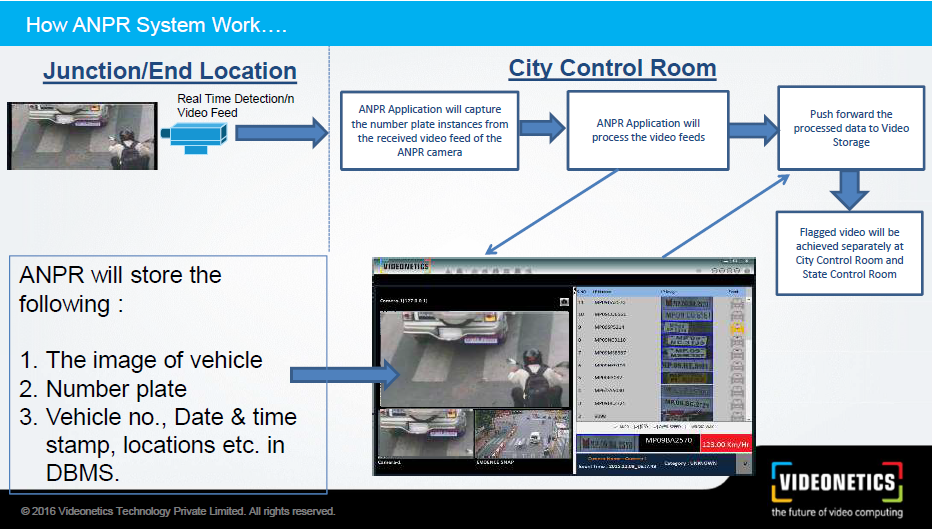
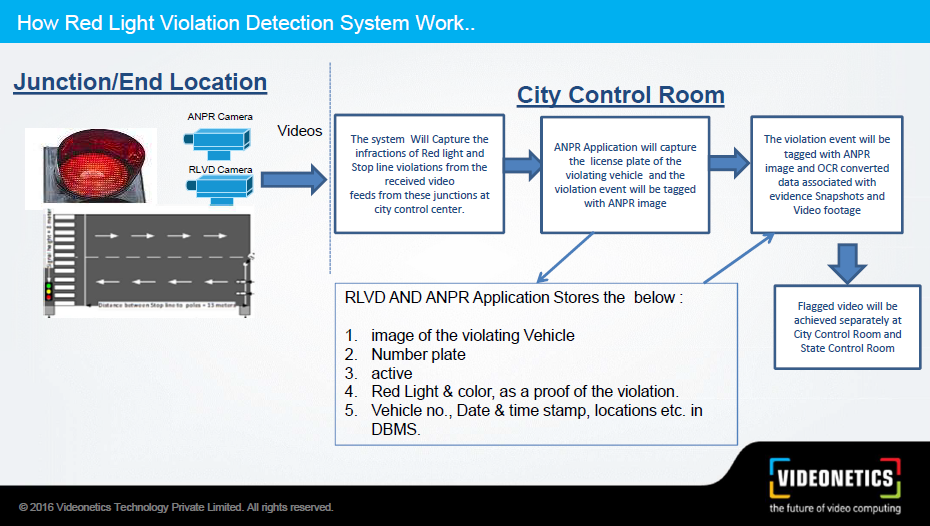
RLVD – Red Light Violation Detection
Red Light Violation Detection (RLVD) system is a system for capturing details of vehicles that have crossed the stop line at the junction while the traffic light is red. System shall be able to automatically detect red light through evidence camera units and other equipment. The information so captured shall be used to issue challans to the violators.
SVD – Speed Violation detection
The SVD system will be used to automatically detect and capture vehicles violating the prescribed speed limit for the given road segment. The system will be capable of capturing multiple infracting vehicles simultaneously in different lanes at any point of time with relevant infraction data like speed of the vehicle, notified speed limit, date, time, location and registration number of the vehicle. This data will be transferred to the E-Challan system for further processing, tracing the ownership details of the infracting vehicle and printing of notices/challans.
E-Challan
The central Control room shall have an integrated e-Challan Module. Every red-light violation event / speed detection event will be processed by e-Challan module. The e-Challan system will be integrated with RTO databases which will fetch the owner details of the violating vehicle. The challan shall have all the details of violation such as date/time of violation, Place of violation, number plate image with OCR and associated evidence images with a unique challan ID.

Variable Messaging System
Variable messaging sign board is a display that will be placed at particular location in the city. Variable Message Sign Display System (VMS) is one of the key elements of dynamic traffic management systems. VMS inform, warn, and guide the motorists on highways, expressways and arterial roads of cities by displaying route /rerouting information, warnings (accidents, congestions), toll rates and special information

Overview of functional parameters of VMS are given below:
- Displays both text and graphic messages.
- The text messages will be capable of display in English, Hindi and Kannada.
- Dynamic display that guide, inform & warn drivers through text messages.
- General VMS messages
- Road condition
- Information about accidents
- Safety & social welfare messages
- Guide traffic
- To advertise
Public Address System (PAS)
Public Address (PA) System is essential component as part of smart city mission, as it will be instrumental in broadcasting information at public places. Public announcements help the citizens and road users in enhancing city awareness and feeding useful information during service delays and emergencies. It is an important tool in the hands of city administrators in dispensing important live contextual information such as traffic conditions, accidents, road conditions etc. or any other information which might be in public interest.
Public Address System (PA system) is an electronic sound amplification and distribution system with a microphone, amplifier and loudspeakers, used to allow a person to address a large public.
Overview of functional parameters of PA system are given below:
- One-way announcement from CCC to all or specific speakers.
- Dispatching of emergency / pre-recorded messages to all speakers or a section of speakers installed at intersections for announcement.
